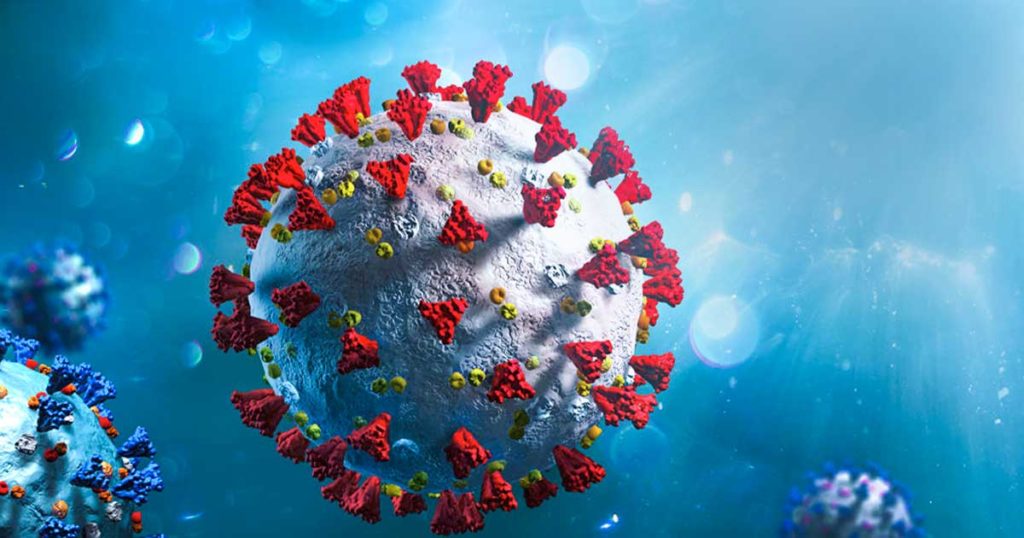
As we’ve all learned from the current global COVID-19 pandemic, coronaviruses are generally bad news. Among the four genera of coronaviruses, the betacoronavirus genus has been especially notorious. In the past 20 years, three highly pathogenic betacoronaviruses, MERS-CoV, SARS-CoV and SARS-CoV-2 have resulted in serious pandemics. All three of these viruses originated from bats, highlighting the continued risk of coronavirus transmission from animals to humans.
Typically, when a new viral threat emerges, researchers scramble to develop drugs or vaccines after the virus has already gotten out of control. However, developing a vaccine for each new virus is a slow and painstaking process, and many lives will be lost before a vaccine is distributed. But what if we had one, universal coronavirus vaccine that could neutralize not only all existing betacoronaviruses, but any new variants that emerge in the future?
The key to producing a pan-coronavirus vaccine is a human monoclonal antibody that can neutralize several different coronaviruses. This kind of antibody actually exists naturally and has occasionally been found in patients who have recovered from COVID-19. In a recent paper published in Science, researchers found five of these monoclonal antibodies from the memory B cells of human donors. All five of the antibodies targeted the S2 stem helix region of the SARS-CoV-2 spike protein. This region is highly conserved across betacoronaviruses and enables the virus to fuse with the host cell membrane.
Out of the five potential candidates, the researchers selected one antibody (S2P6) that had the greatest cross-reactivity and neutralization potency. They found that S2P6 could inhibit viral entry into host cells across multiple betacoronaviruses, including several variants of SARS-CoV-2 (alpha, beta, gamma, kappa), SARS-CoV, MERS-CoV and others. They also examined the structure of S2P6 binding using cryo-electron microscopy. Results showed that S2P6 inhibits viral entry by blocking conformational changes within the spike protein that are required for the viral membrane to fuse with the host membrane.
Therapeutic antibodies are known to protect against viruses by stimulating antibody-dependent cell cytotoxicity (ADCC) and antiviral immune responses in the host. This response is triggered when the Fc (constant) region of the antibody binds to Fc receptors located on the surface of host cells. Using Promega SARS-CoV2-S CHO-K1 (HaloTag®-HiBiT) target cells, the researchers found that S2P6 indeed triggers Fc receptors to induce ADCC in vitro.
Next, the researchers wanted to see whether S2P6 could protect against SARS-CoV-2 in a hamster model. They administered S2P6 to hamsters 24 hours before exposing them to the SARS-CoV-2 virus. They found that the antibody was able to reduce the viral load of SARS-CoV-2 four days after exposure.
How common are these stem helix-targeting antibodies and how do they naturally occur? According to this study, they are relatively rare. The highest frequencies occurred in patients who have recovered from COVID-19 and were then vaccinated. The researchers suspect that S2P6 was generated over a course of multiple infections. The individual may have first been infected with a mild coronavirus that caused a common cold, which primes the memory B cells. Then, as the individual is infected with other betacoronaviruses, the specificity of the antibodies is broadened through several rounds of somatic mutation.
The discovery of pan-betacoronavirus antibodies raises the possibility of a universal coronavirus vaccine for all existing and future betacoronaviruses. However, because the natural production of these antibodies is so rare, future research will need to determine how to induce enough antibody production in the body for a protective effect. If such a vaccine is developed, it could prevent future betacoronavirus pandemics and save countless lives.
Reference
Pinto, D. et al. (2021) Broad betacoronavirus neutralization by a stem helix-specific human antibody. Science. 373, 1109–1116.
Want to eliminate the variability of primary cell-based ADCC Assays? Learn about our PBMC ADCC Bioassay, a simple MOA-based functional bioassay to measure Fc effector activity. With an easy add-mix-measure protocol and sensitive luminescent readout, this assay provides a more consistent, reliable alternative compared to traditional primary cell ADCC bioassays.
Curious about anti-viral development and research? Read about one lab group’s approach to screening for anti-viral compounds.
Latest posts by Johanna Lee (see all)
- Can AI Replace High-Throughput Screens for Drug Discovery? - April 30, 2024
- How Avian Influenza Crosses Species - February 22, 2024
- Macrophages: The Unsung Heroes of Immune Response and Biologic Drug Development - December 28, 2023
